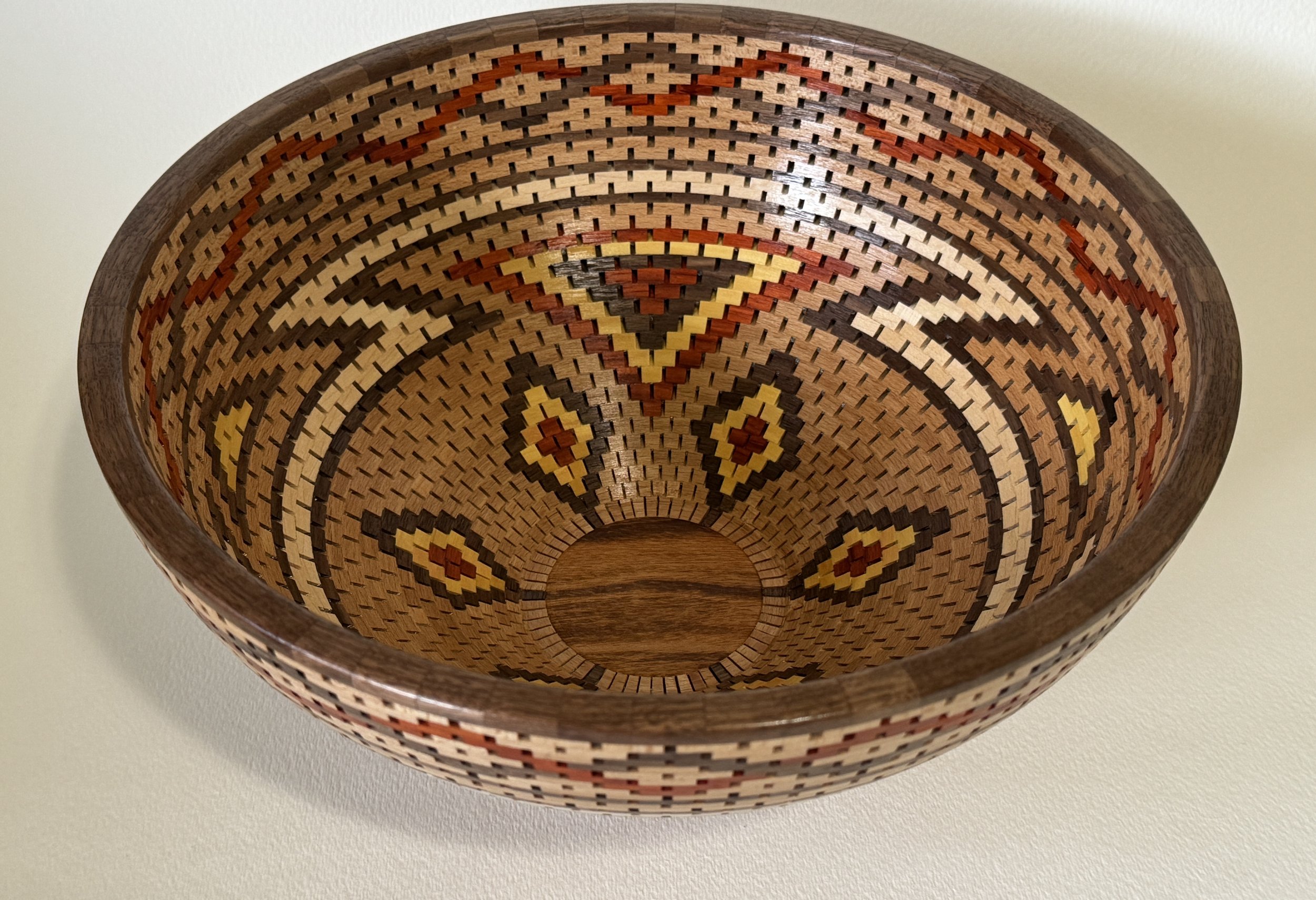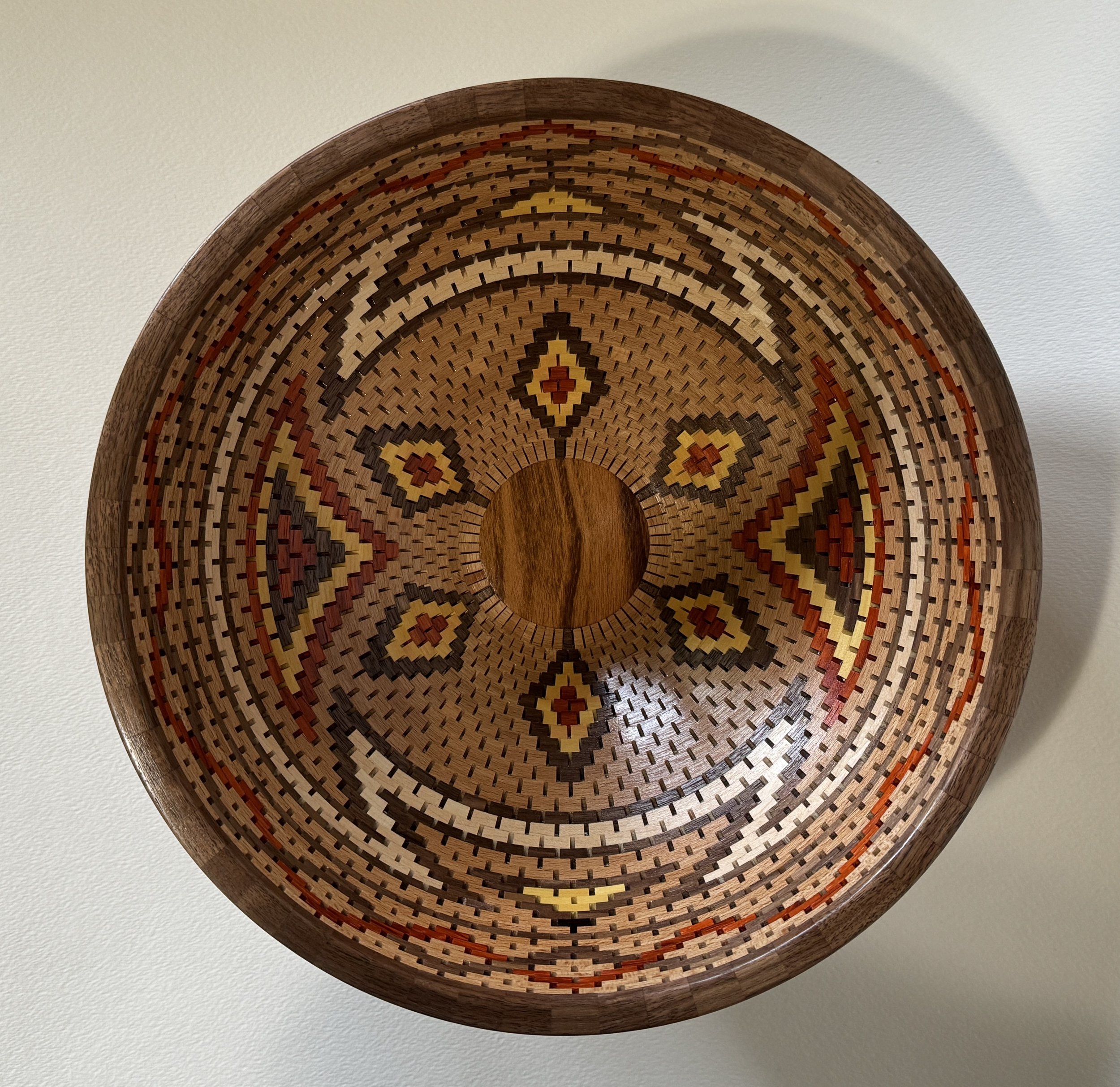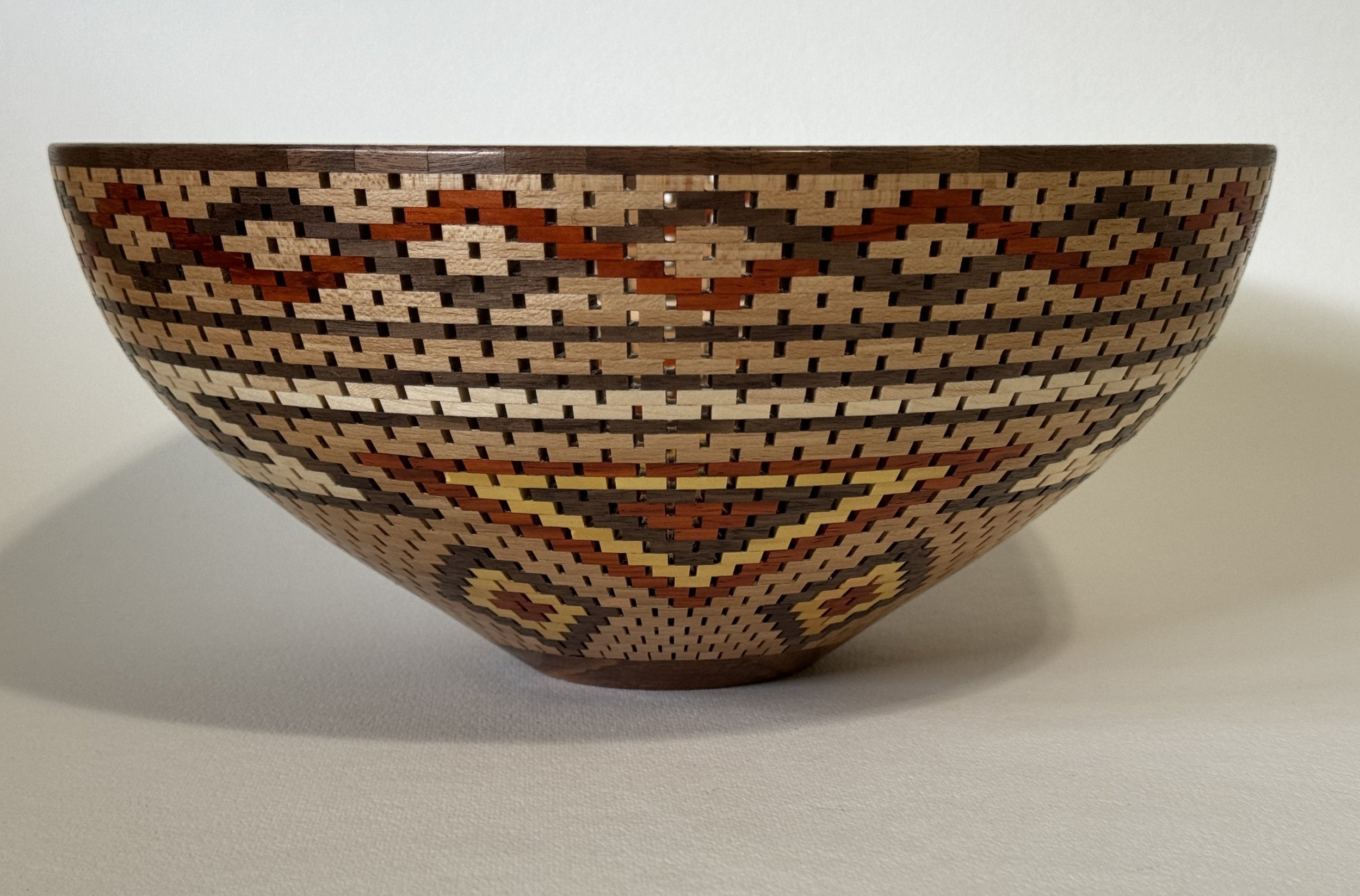Mark Weigel was born in Regina in 1958 and grew up on a farm near Quill Lake, Saskatchewan. In 1979
he moved to Saskatoon and started a career in metal manufacturing that lasted until he retired in 2016.
Mark’s interest in woodworking began in his early twenties. He began by making cabinets and furniture.
When he retired, he began experimenting with differing wood types while creating one of a kind cutting
boards for family and friends. Later he purchased a lathe and began woodturning. His main focus is on
segmented woodturning of bowls, vases and lamps made from exotic woods such as Purpleheart,
Padauk, Mahogany, Yellowheart, and Koto. His creations began with items containing less than one
hundred pieces and have now grown to several thousands of pieces. These bowls have captured the
attention of many people



